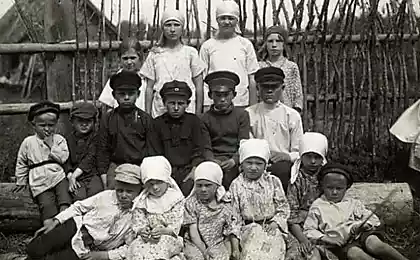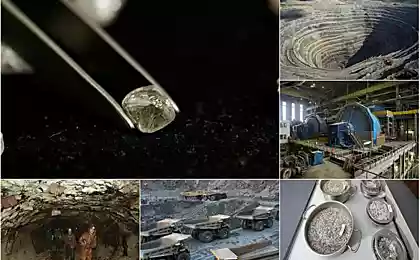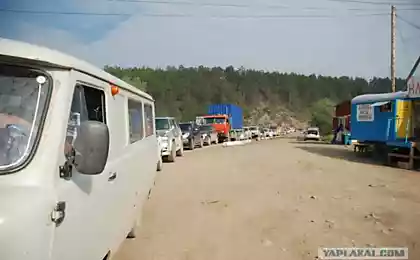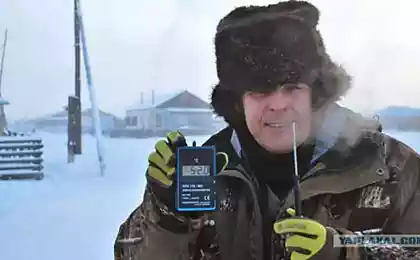10459
Clothing peoples of Yakutia
The population of Yakutia is 955, 6 thousand. People, of which about half is represented by the indigenous people. Make up most of the Yakuts, the rest minorities. We offer a selection of clothes some small peoples of Yakutia.

For northerners deer - not only the main mount and a source of food, but also a valuable "supplier" of materials for clothes. Has long winter clothes were made of reindeer skin, summer - rovduga (tanned buckskin). Now traditional clothes are mostly either during the holidays, or combined with modern clothing.

Still should be pointed out that today's national dress of northern peoples is very different from the traditional. It is connected not only with the advent of new materials in use, but also with increased inter-ethnic contacts, which occurred as a result of the interchange of parts of clothing. For example, the Even reindeer herders now prefer either dead outer clothing (as in the Chukchi and Koryak), or fur jacket with pockets and collar (as Yakuts).

According Evdokia Side - the Even poet, melodist and collector Even folklore, "not so long ago, men's and women's clothing Evens was the same and the difference is mainly in the number and nature of jewelry." Men aprons decorated modestly, women's well decorated rovduga fringe, fur tassels, metal pendants etc.

Media culture of Even, born Allaikhovsky District Maxim Dutkina.
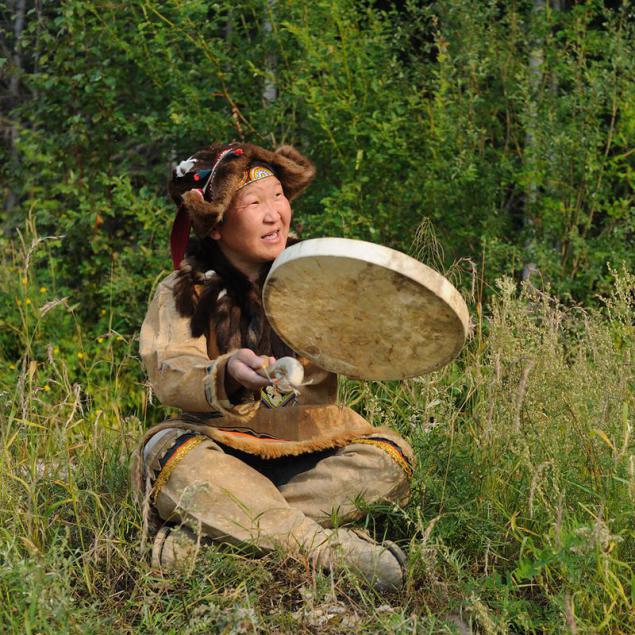
To decorate clothing and household items peoples of the North have long used beads. There is evidence that in pre-revolutionary Russia for a small number of beads gave a whole deer. Art sewing beads indigenous peoples of the North passed down from generation to generation. Beaded ornament combined with cloth, leather, fur northern masters decorate clothing, boots, hats, and even deer and reindeer sledges.



The smallest and everyday items of clothing and household items are striking richness and complexity of ornamental bead embroidery.


Ornaments showed social and gender and age differences, and some decorative elements were something like calendars. It was in the jewelry and ritual significance - it was thought that the ringing of metal pendants scare away evil spirits and protects the wearer.


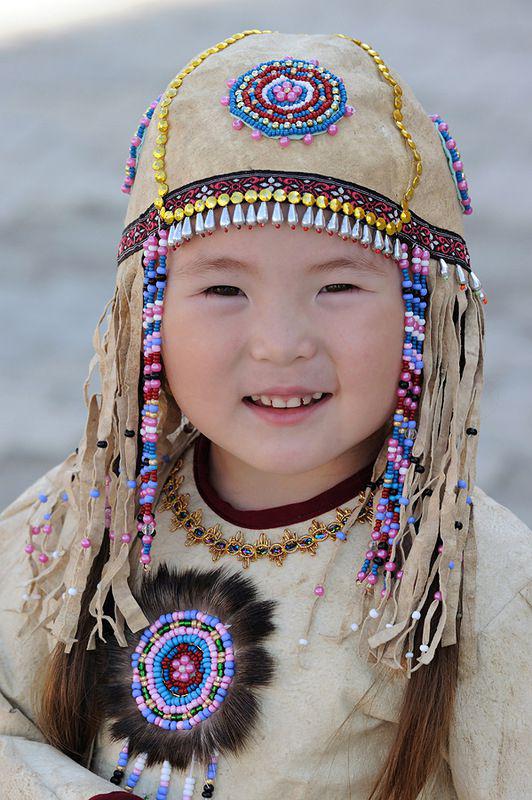
& Quot; ... the incessant ringing of trinkets accompanies each movement Lamutskiy girls ... & quot;
Olsufiev AV A general outline of the Anadyr districts, its economic condition
and way of life of the population. - SPb .: Typography Imperial Academy of Sciences, 1896. - P. 135.

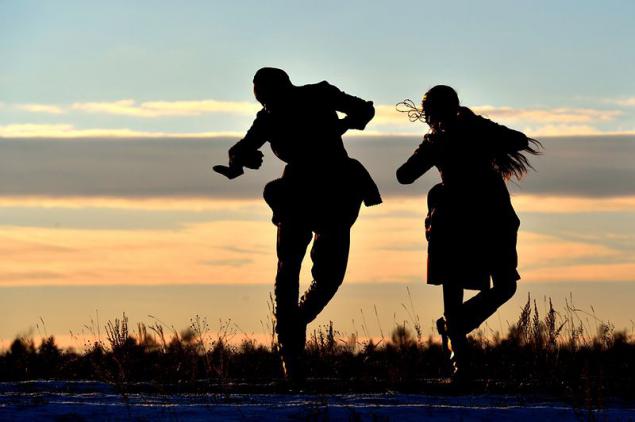
Like all peoples, each ornament has its value. One of the most famous designs is the "chess". He means deer trails. At the heart of the image patterns are also used horns of bighorn sheep or deer, traces of various animals, etc.


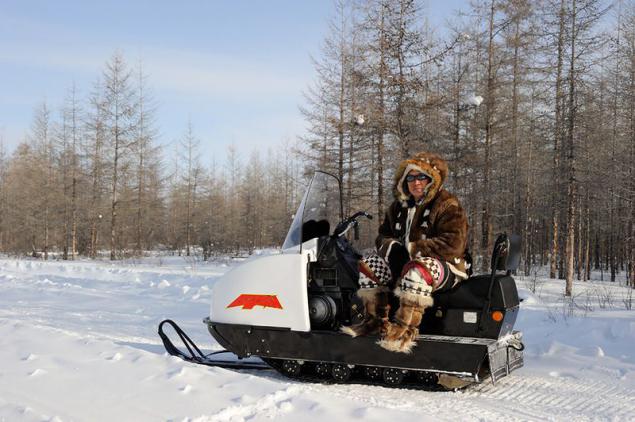

Dolgan reindeer herders delegation at a rally (Yakutsk, 2013)
Dolgan nation has developed in the XIX - early XX centuries. moved from a river Lena and Olenyok Evenki, Yakut, local Evenki, individual families and the so-called Ents zatundrennyh peasants. Brockhaus and Efron Encyclopedic Dictionary, published in the late XIX - early XX centuries, notes that "some of the Yakuts moved to the Yenisei province, in Turukhansk region where they had quite obyakutit Dolgan - small Tungus tribes, just as the Russian, abandoned in the far corners of the Yakutsk region. " VV Ushnitsky in his work "Tunguska birth Yakutia XVII century .: the origin and ethnicity" wrote:
"There are two points of view on the origin of the Dolgan. The first is that Dolgan - independent origin ethnicity, with its independent culture and language, and the second - that Dolgan are one of the groups of Northern Yakutia-herders. Noteworthy historical figure Dygynchi - knyaztsa Dolgans. He also referred to as on Jan knyazets "Yukagirs." Apparently, Dolgan fled to Yukagirs Jan. His image came into folklore northern Yakutia reindeer herders under the name Darinchi, his son Yungkeebil have lived and worked on Olenka ».

Colorful Russian shawls from Soviet times here are very popular and very harmoniously look at the background of the northern ornaments.

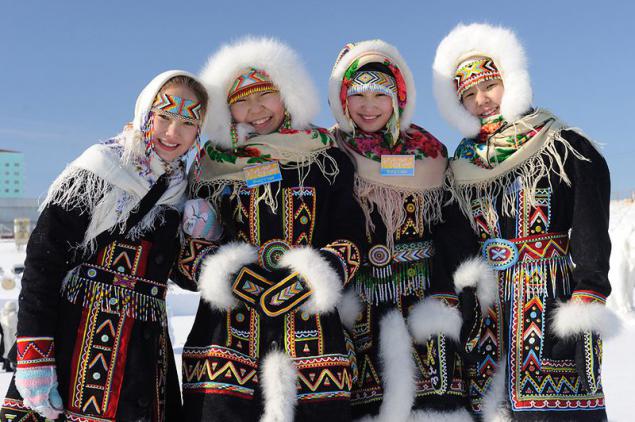

Chukchi Yakutia show off their outfits.


For coloring of leather used various natural dyes. For example, the infusion of alder bark or dust.

Evenk Dutkina Vera Alexandrovna. She comes from the Tomsk region and arrived in Yakutia back in the 70s. Vera Alexandrovna told me that apron, which she shows her grandmother belonged to another.

One of the most common among the indigenous peoples of the North ways to decorate clothing, footwear, headgear, household items is fur mosaic. The compositions of color contrasting pieces of fur sewn together by hand or cut out a pattern in the form of stripes, diamonds, triangles, circles and other geometric shapes.







Traditional summer clothes sewn from rovduga, but as currying busy enough time-consuming, and they weigh a lot, now in many dance groups instead of leather or cloth used or factory suede.
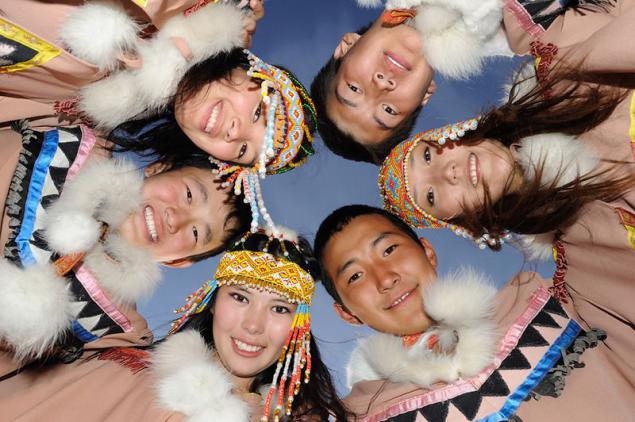

Evenki singer Sinilga



Source: sachaja.livejournal.com

For northerners deer - not only the main mount and a source of food, but also a valuable "supplier" of materials for clothes. Has long winter clothes were made of reindeer skin, summer - rovduga (tanned buckskin). Now traditional clothes are mostly either during the holidays, or combined with modern clothing.

Still should be pointed out that today's national dress of northern peoples is very different from the traditional. It is connected not only with the advent of new materials in use, but also with increased inter-ethnic contacts, which occurred as a result of the interchange of parts of clothing. For example, the Even reindeer herders now prefer either dead outer clothing (as in the Chukchi and Koryak), or fur jacket with pockets and collar (as Yakuts).

According Evdokia Side - the Even poet, melodist and collector Even folklore, "not so long ago, men's and women's clothing Evens was the same and the difference is mainly in the number and nature of jewelry." Men aprons decorated modestly, women's well decorated rovduga fringe, fur tassels, metal pendants etc.

Media culture of Even, born Allaikhovsky District Maxim Dutkina.

To decorate clothing and household items peoples of the North have long used beads. There is evidence that in pre-revolutionary Russia for a small number of beads gave a whole deer. Art sewing beads indigenous peoples of the North passed down from generation to generation. Beaded ornament combined with cloth, leather, fur northern masters decorate clothing, boots, hats, and even deer and reindeer sledges.



The smallest and everyday items of clothing and household items are striking richness and complexity of ornamental bead embroidery.


Ornaments showed social and gender and age differences, and some decorative elements were something like calendars. It was in the jewelry and ritual significance - it was thought that the ringing of metal pendants scare away evil spirits and protects the wearer.



& Quot; ... the incessant ringing of trinkets accompanies each movement Lamutskiy girls ... & quot;
Olsufiev AV A general outline of the Anadyr districts, its economic condition
and way of life of the population. - SPb .: Typography Imperial Academy of Sciences, 1896. - P. 135.


Like all peoples, each ornament has its value. One of the most famous designs is the "chess". He means deer trails. At the heart of the image patterns are also used horns of bighorn sheep or deer, traces of various animals, etc.




Dolgan reindeer herders delegation at a rally (Yakutsk, 2013)
Dolgan nation has developed in the XIX - early XX centuries. moved from a river Lena and Olenyok Evenki, Yakut, local Evenki, individual families and the so-called Ents zatundrennyh peasants. Brockhaus and Efron Encyclopedic Dictionary, published in the late XIX - early XX centuries, notes that "some of the Yakuts moved to the Yenisei province, in Turukhansk region where they had quite obyakutit Dolgan - small Tungus tribes, just as the Russian, abandoned in the far corners of the Yakutsk region. " VV Ushnitsky in his work "Tunguska birth Yakutia XVII century .: the origin and ethnicity" wrote:
"There are two points of view on the origin of the Dolgan. The first is that Dolgan - independent origin ethnicity, with its independent culture and language, and the second - that Dolgan are one of the groups of Northern Yakutia-herders. Noteworthy historical figure Dygynchi - knyaztsa Dolgans. He also referred to as on Jan knyazets "Yukagirs." Apparently, Dolgan fled to Yukagirs Jan. His image came into folklore northern Yakutia reindeer herders under the name Darinchi, his son Yungkeebil have lived and worked on Olenka ».

Colorful Russian shawls from Soviet times here are very popular and very harmoniously look at the background of the northern ornaments.



Chukchi Yakutia show off their outfits.


For coloring of leather used various natural dyes. For example, the infusion of alder bark or dust.

Evenk Dutkina Vera Alexandrovna. She comes from the Tomsk region and arrived in Yakutia back in the 70s. Vera Alexandrovna told me that apron, which she shows her grandmother belonged to another.

One of the most common among the indigenous peoples of the North ways to decorate clothing, footwear, headgear, household items is fur mosaic. The compositions of color contrasting pieces of fur sewn together by hand or cut out a pattern in the form of stripes, diamonds, triangles, circles and other geometric shapes.







Traditional summer clothes sewn from rovduga, but as currying busy enough time-consuming, and they weigh a lot, now in many dance groups instead of leather or cloth used or factory suede.


Evenki singer Sinilga



Source: sachaja.livejournal.com








